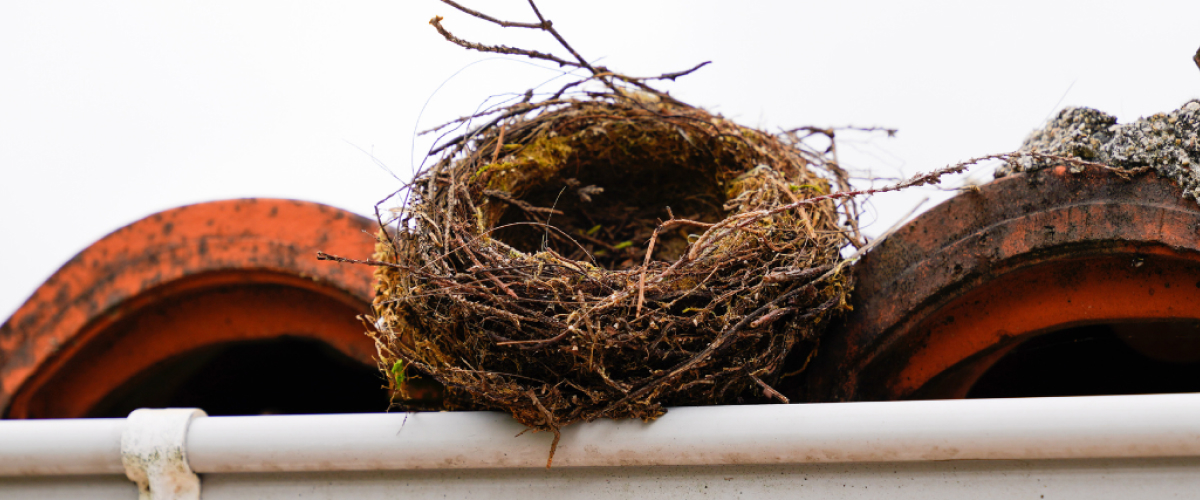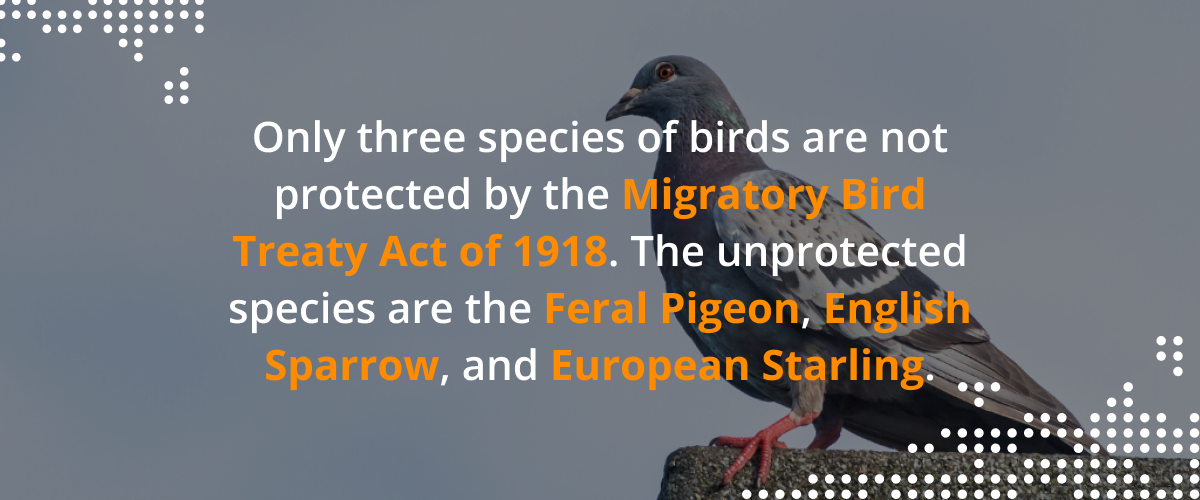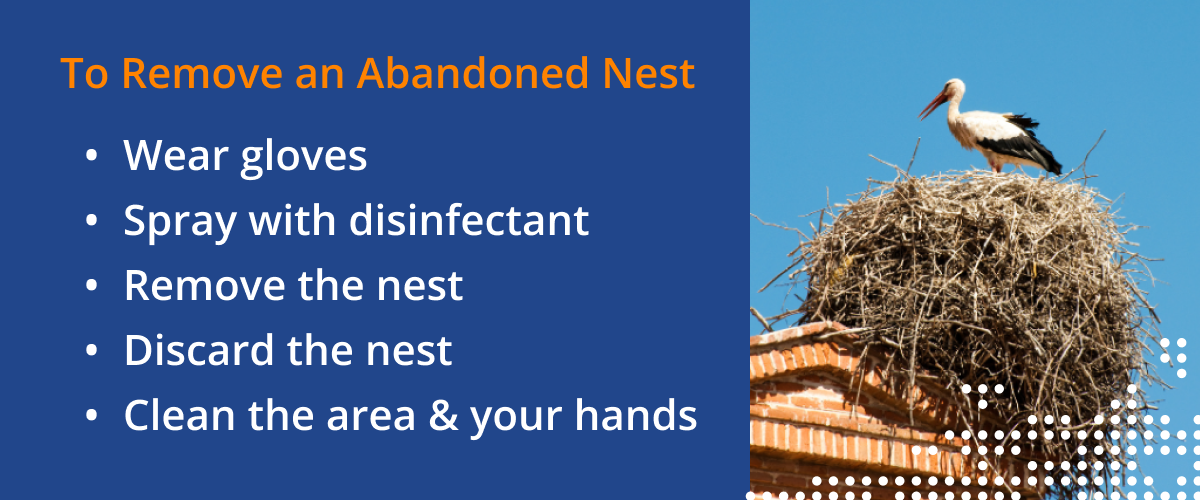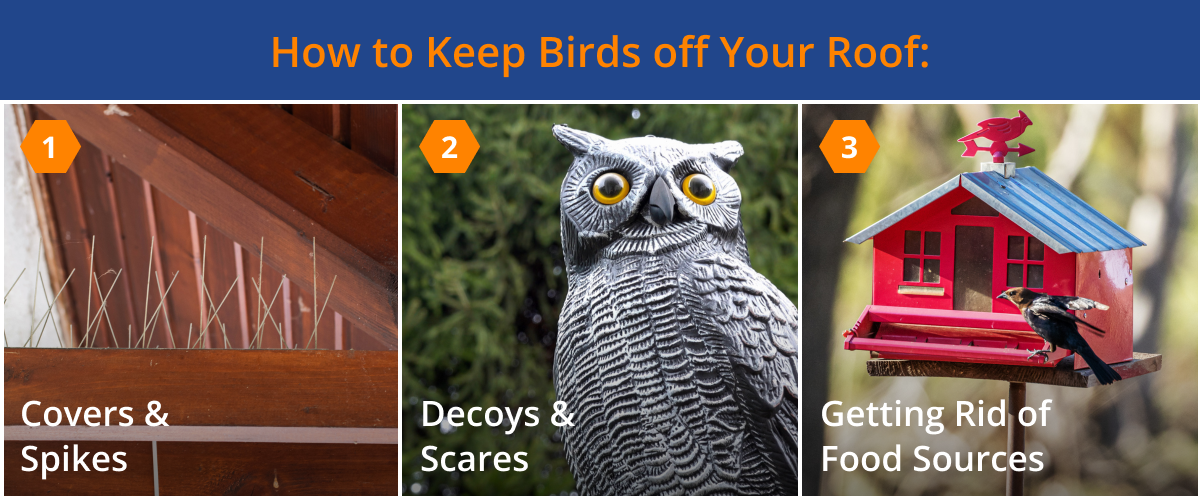
How to Get Rid of Birds on Your Roof
Birds are beautiful and beloved creatures. With over 2,000 species of birds to enjoy in North America, it’s no wonder birdwatching has become a major pastime.
Birds are awesome, but they can be a nuisance in certain circumstances. Not only can they spread germs and attract unwanted critters, but they can build their nests in unsightly and unsafe places.
Here’s what to do if birds nest on your roof.
Can Bird Nests Harm Your Home?
Depending on the location of a bird nest, they can be destructive. The most significant concern isn’t the destruction of property but the pathogens found in bird droppings.
In some situations, bird nests could also cause damage to your home. These areas are not only dangerous to your home but to the nest as well. Some places you don’t want a birds nest are:
- Fans
- Vents
- Chimney
- Siding
- Gutters
If you have a bird’s nest in one of these areas, dealing with it correctly and quickly is essential.
What if There are Birds in Your House?
If you’re wondering how to get rid of birds living in walls or what to do if birds nest in your roof, your best bet is to call a local wildlife specialist. As we’ll explain, federal law protects most birds and their nests — requiring a permit for removal.
If a lone bird has somehow made its way into your wall, it’s best to cut out a portion of the drywall to allow it to escape from your home.
If There’s currently a Nest on Your Roof
If you plan on removing a nest from your roof or the exterior of your home, there are some things you need to know.
Legality
Because most birds are protected species, only trained professionals can move them with the correct permits and permissions.
Only three species of birds are not protected by the Migratory Bird Treaty Act of 1918. The unprotected species are the Feral Pigeon, English Sparrow, and European Starling. These three species can be removed without legal repercussions, regardless of the status of the nest or if there are eggs inside.
If you cannot confirm the bird nesting species in your home, do not take the nest down. Instead, call animal control experts who have permits for wildlife relocation.

Timing of Removal
Depending on the time of year, you may not want to remove the nest. Birds are in nesting season between March 20 and June 20. During this time, birds seek shelter and resources to tend to their eggs.
Federal law protects active bird nests. You must wait until the nest is not in use before removing it. That means waiting for the nest to be unoccupied. There cannot be any eggs, chicks, or young birds dependent on the nest.
If the bird is causing undue distress or causing damage to your home, call a wildlife control specialist to see if it can be relocated.
Make Sure the Nest Can Be Removed
Just because a nest is abandoned doesn’t mean it’s ready to be removed. Certain species of birds return to their nests each year. These birds are typically larger birds and raptors.
Other birds with protected abandoned nests are endangered birds unlikely to rebuild.
Bald and Golden Eagles are special cases. Special permitting is required for the nest removal of these species.
Removing a Nest
You can remove the nest once you confirm it is no longer in use and the bird that used it is not an endangered or special case species.
To remove the abandoned nest:
- Wear gloves
- Spray the nest with a disinfectant
- Remove the nest
- Discard the nest in an enclosed container away from your home to avoid attracting any predators
- Clean the area & wash your hands

Preventing Birds from Nesting on Your Roof
If that seemed like a hassle, it is. The best way to deal with bird nests is to prevent them from happening. These options will teach you how to keep birds off your roof.
Covers & Spikes
If there are specific places birds continually nest, it’s important to block their entrance or change the area.
The entrance should be blocked using covers or chicken wire for chimneys, vents, and similar areas.
For ledges, bird spikes can deter bird nests. Another option would be to add a bird slant to the ledge, making it impossible for the bird to nest there.
Decoys & Scares
You’ve probably seen fake owls on top of roofs before. These decoys help keep unwanted visitors from the area. Unlike decoys, scares are typically abstract, but they serve the same purpose — scare birds.
Decoys and scares come in many shapes and sizes and can be made at home using shiny objects.
Getting rid of Food Sources
Removing any food sources is another excellent option for preventing nesting birds in your house.
Keep your trash sealed, and move any bird feeders or baths farther away from your home. Ensure any bird feeders only have enough seed for a couple of birds at a time and clean any spilled seeds.

Taking Care of Your Roof
The state of Arizona is home to over 500 species of birds. With so many birds living alongside us, knowing how to legally and safely handle them when they intrude into and onto our homes is essential.
Bird nests are just one of the things homeowners need to take care of while maintaining their homes. It can be a complicated endeavor with many legal caveats. However, you can find help to remove the nest by contacting a licensed wildlife or pest professional.